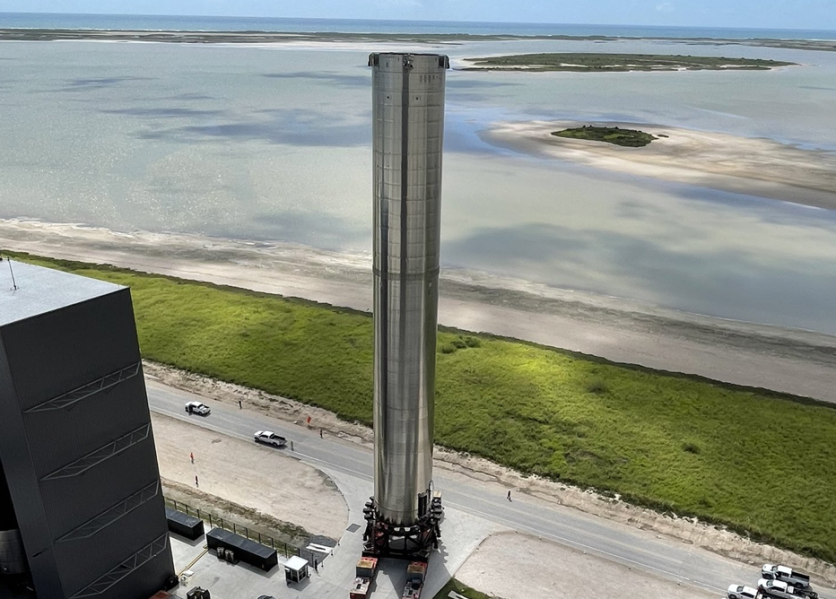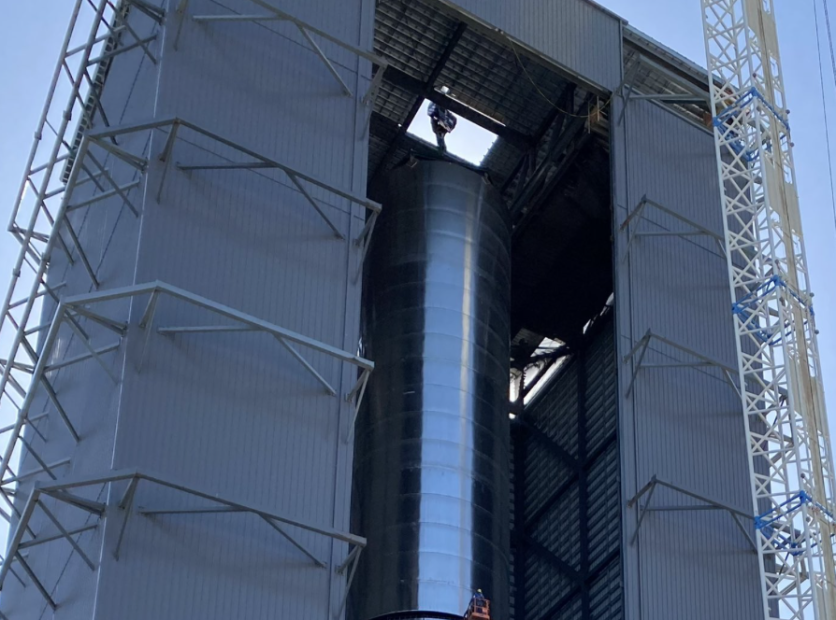SpaceX Super Heavy has now moved to its "Orbital Launch Mount" and it is also known as the "Chop Stick." The CEO and founder of the company referred to it like this because of the way it catches the spacecraft, as it also returns it to its booster mount in preparation for its next flight.
The video on how the Super Heavy would get caught was then demonstrated by a SpaceX fan in a render.
Earlier today, Musk has confirmed that SpaceX would soon have its Orbital Test Flight and shares multiple first-look images of the towering rocket which would be used.
SpaceX Super Heavy Orbital Launch Mount, 'Chop Stick'

SpaceX's Super Heavy Orbital Launch mount was referred to by the eccentric CEO of the company as "Chop Stick" as revealed by Everyday Astronaut on Twitter. Here, he quoted Elon Musk, which initially called this venture "Chop Stick," or the usual utensil used by Asians for their food.
The catch tower or "orbital launch tower" performs like a "Chop Stick;" Holding the spacecraft upright before it launches, and catches it as it descends from a mission.
Think of it this way, the Super Heavy is the metaphoric "Spring Roll," and the catch tower is the "Chop Stick" holding the spacecraft upright, ready for launch, and back to the planet.
We stole the idea from Karate Kid
— Elon Musk (@elonmusk) August 3, 2021
Musk said that they "stole" the idea of the "Chop Stick" from "Karate Kid," a 1984 coming of age action movie about a teen. The "Karate Kid" has a massive symbolism for "Chop Stick" in catching a fly, saying that if a person catches the insect, it already achieves something significant.
How SpaceX's Chop Stick Work to Catch Super-Heavy
On the other hand, a fan called "Erc X" on Twitter made a render of how the Super Heavy would be caught by the "Chop Stick" on its way back to the planet after propelling the Starship to orbit.
It showed that the Super Heavy would not get clasped by the mounts immediately as it lowers, and would only do so if it has lined up with its booster mounts.
Very close to real! Arms are able to move during descent to match exact booster position.
— Elon Musk (@elonmusk) August 3, 2021
Catch point is off to side, in case catch fails – don’t want to hit launch mount.
Booster is transferred back to launch mount for next flight.
Designed to have <1 hour turnaround.
The SpaceX CEO noticed this, and said that it was "very close to real," then continues to explain the mechanism and process of the return flight. Super Heavy would not be landing on a drone ship or back to the launch pad itself, as it would need to be on its mount the entire time it is here on Earth.
Moreover, it would prioritize protecting the spacecraft's grid fins and the launch mount in case of failure.
SpaceX Orbital Test Flight

The Full-Stack of Super Heavy and Starship would not stay on the Earth alone, as both would be a waste of its potential. It aims for the orbit, and back again to the surface to see its capabilities to fly and land.
None was revealed for its exact date of flight, but it certainly did not line up with SpaceX's aim of July.
This article is owned by Tech Times
Written by Isaiah Richard




